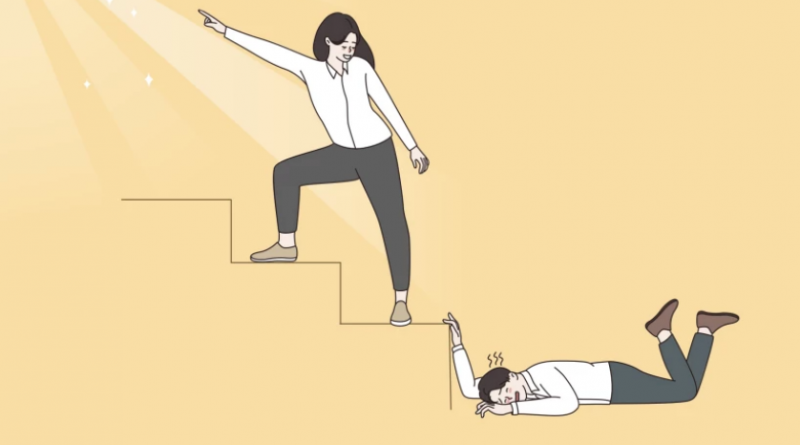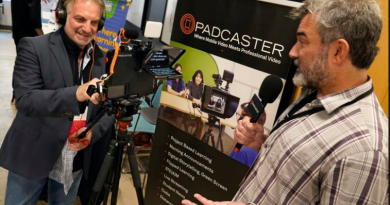How Do We Collaborate When Tensions Are Running High?
These are all great ideas for effective teamwork and are highly desired. They are the traits that every team building, empowerment, and collective-efficacy article will cite about how to get things done and build a culture of unity.
But what do we do when we are in the middle of the confrontation, as so many of our school leaders are currently? Is seeking unity and collaboration worth the energy and worth the risk? There is a genuine and justified apprehension from many that collaboration is just too difficult or too risky when the attacks are becoming more heated and more vitriolic.
A natural human reaction is to hunker down, not make waves, and keep a low profile. This is understandable. Our school leaders have been through two years of unprecedented change in both pedagogy and school management. They have lived and experienced students, families, and staff suffering as they have juggled muddling policy directives—or more often the absence of any policy directives. They have somehow kept classes going, students learning, and staff safe, only to be faced with growing unease and unrest at the school board, PTA, or at community forums.
It would be understandable if they said that they—and their staff (and their communities)—are too exhausted to undertake another round of rancor.
What do we do when we are swimming in a tide of confrontation?
This analogy may not work exactly, but the surfer—caught in a riptide—doesn’t fight against it, but instead lets themselves move along with it until it weakens. They don’t confront the rip, they don’t face it head on. Knowing when and how to use our energy may be as important in addressing confrontation. It’s not just what we say and do but also when and how we say it.
And the needed and opposing question to be asked must be: What do we lose by not engaging with those who are clearly concerned and passionate? Do we alienate ourselves or those in our community by not seeking collaboration? And do we unwittingly curtail the chance of meaningful change and meaningful understanding of an issue by seeking a collective response?
These times are not easy and probably require more thought and deliberation into what we have done naturally for a while. Collaboration was a clear function when things were good. It is probably a more necessary endeavor now that things are stressed.
So how do we establish and grow collaboration in the midst of confrontation? I asked several education and transformational-change leaders for their perspectives: Lacee Jacobs, head of diversity, equity, and inclusion at BTS Spark; Cindy Rogan, a leadership coach, and former superintendent; and Chaunté Garrett, a current superintendent in Rocky Mount, N.C. Their responses have been arranged by their key themes.
Art of leadership
Cindy Rogan: It’s the art of leadership! I see it as a dance with moves that include courage, compassion, and curiosity. Courage to be willing to take that risk of leaning into deep listening before jumping too quickly into your response or problem-solving mode. It can be challenging when you’re feeling defensive, tired, or simply caught up in the emotion of the moment.
Compassion
Lacee Jacobs: How can we be compassionate enough to understand we are all a work in progress? Creating a safe space to dissent, make mistakes, and contribute ideas without fear is where true collaboration and commitment begins.
Cindy Rogan: Compassion for the other person/people in this dance is key. What are they thinking or feeling that’s causing these strong emotions? What beliefs or values are coming up for them? Where might you find a glimmer of common ground or alignment?
Curiosity
Lacee Jacobs: Curiosity starts when we forget what we think we know about people and meet them where they are in the moment. Dropping our agendas and showing genuine interest in others’ experiences by asking questions we don’t know the answers to fosters psychological safety and promotes collaboration.
Cindy Rogan: Curiosity is key as you listen with your head and heart. Asking questions to draw out those beliefs, their “why” that is causing this confrontation. By balancing your courage, compassion, and curiosity, you might find you are in a more steady state to have a more collaborative dialogue.
Comfortable with being uncomfortable
Chaunté Garrett: We have just got to be comfortable with being uncomfortable.
Lacee Jacobs: Growing our quotient for discomfort is one of the best ways to become an adaptive leader who is prepared to face the challenges of today. This will build our strength to collaborate and allow us to recognize there is more than one worldview we need to consider.
Chaunté Garrett: As a leader, you may need to decide I’m not the person to lead this. I may meet to be a listener in this conversation and I’ll be a learner in this conversation.
Collaboration
Lacee Jacobs: Collaboration is not about getting others to see our point of view. Collaboration is an opportunity for us to shift our own mindset and prioritize our relationships over being right.
Chaunté Garrett: By seeking other voices and collaboration, ownership doesn’t just fall on the person who may be wearing the hat or the title. The ownership falls on the community to help the community become better and stronger.
Collaboration = > cooperation but < abdication
Collaboration is more than cooperation. It is more than going along with something that you may not agree with or something you may not have had a say in deciding. We’ve all been “voluntold,” and merely cooperating is the next step on that same continuum—we agree to go along, but it hasn’t been anything we necessarily agree with nor see or value as our own. The “co” part of the word has more to do with being co-opted or coerced to be part of something, and our co-operation has more to do with us showing that we are cooperative rather than having any investment in the outcome.
But collaboration is less than abdication. It is not submitting yourself and your beliefs to the viewpoints of others. For anything to be truly collaborative, it must be owned by the team or the group. Submission to others does not result in ownership, and, in fact, it will do the opposite and relegate the solution to being someone else’s responsibility.
Collaboration requires others, and often, others bring dissenting voices. One cannot collaborate with oneself, and excluding others from the process may set whatever you are doing on a path toward irrelevance.
Be curious, show compassion, and get comfortable with being uncomfortable. You may not change mindsets immediately, but you are creating space for voices and establishing environments that are more likely to include rather than exclude, empower rather than disengage, and bring communities together rather than push them apart.
Source: https://www.edweek.org/leadership/opinion-how-do-we-collaborate-when-tensions-are-running-high/2022/08




